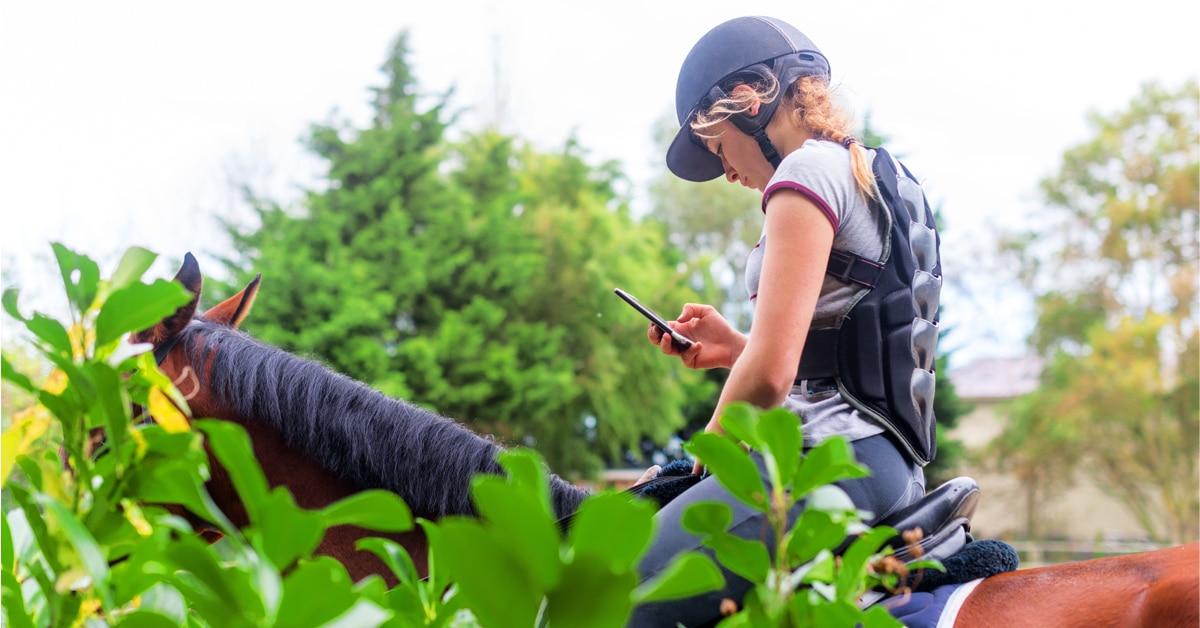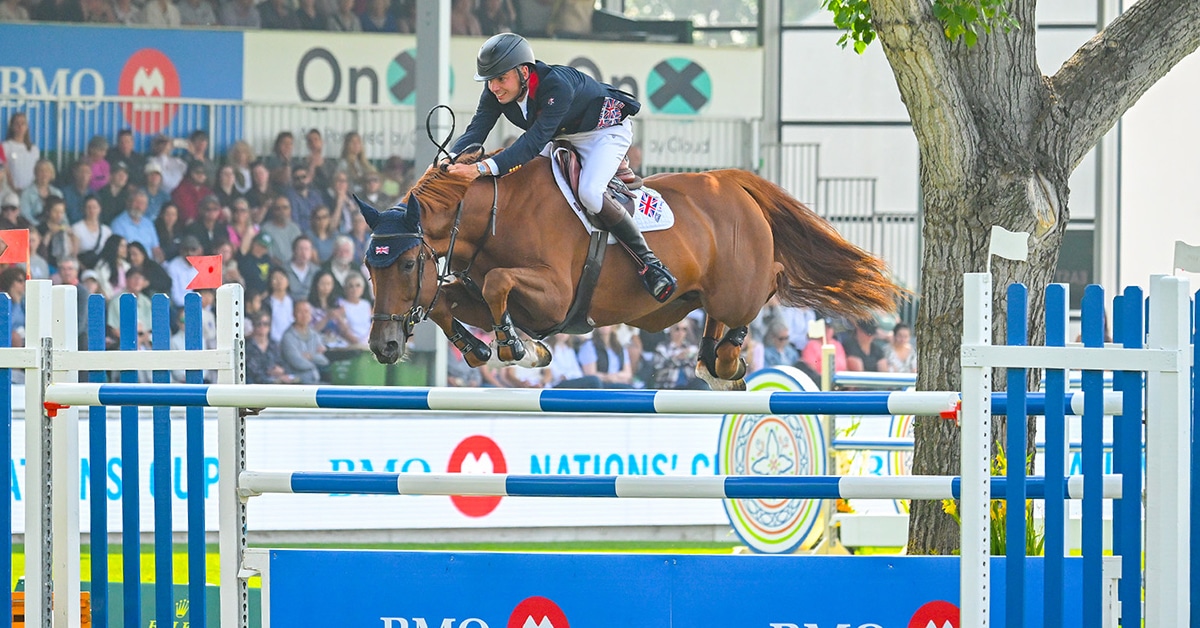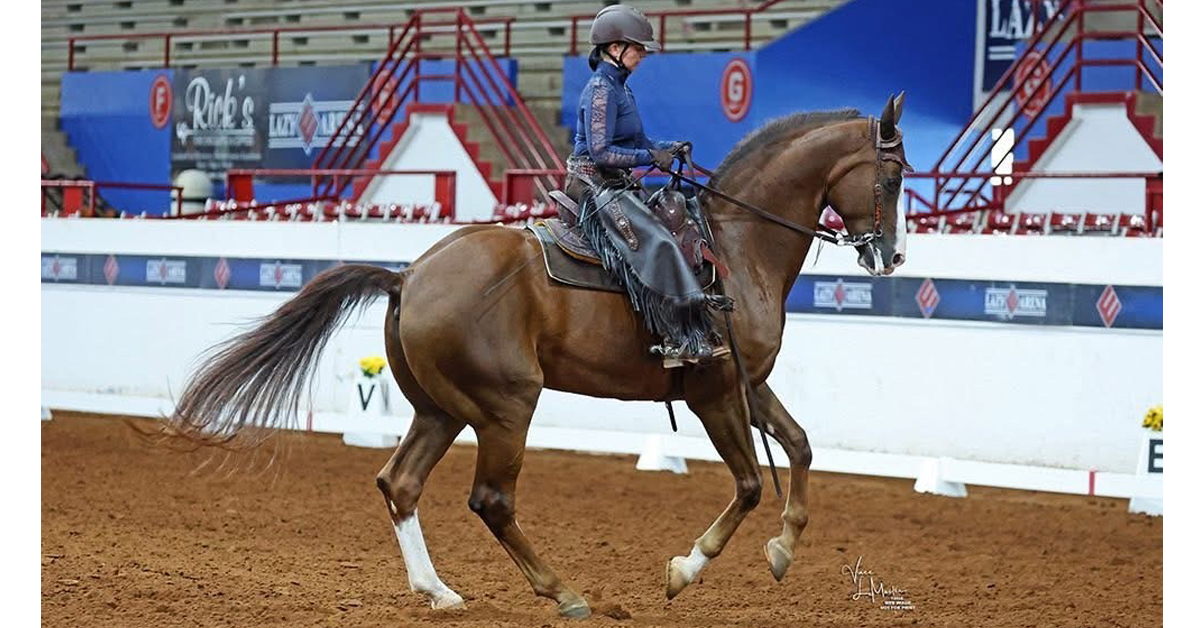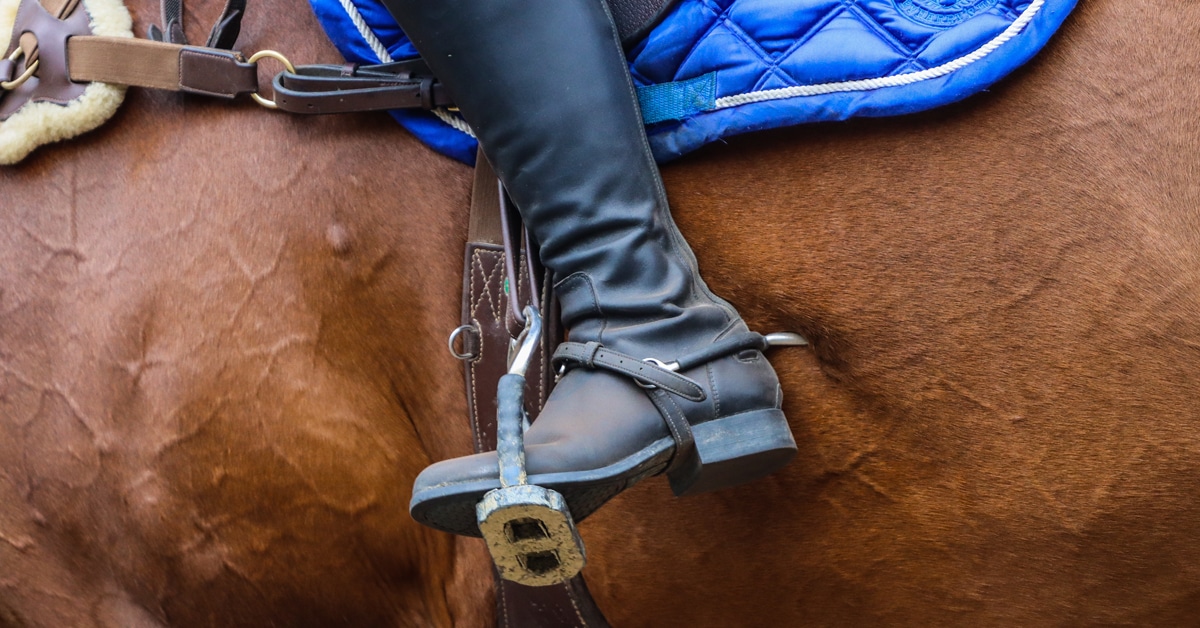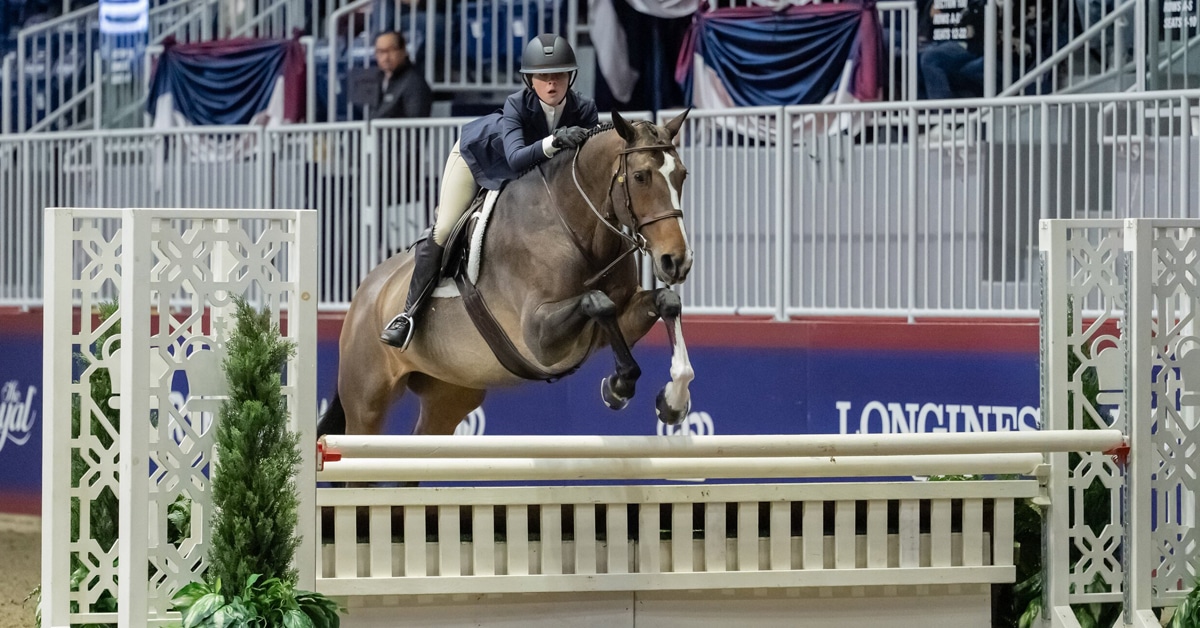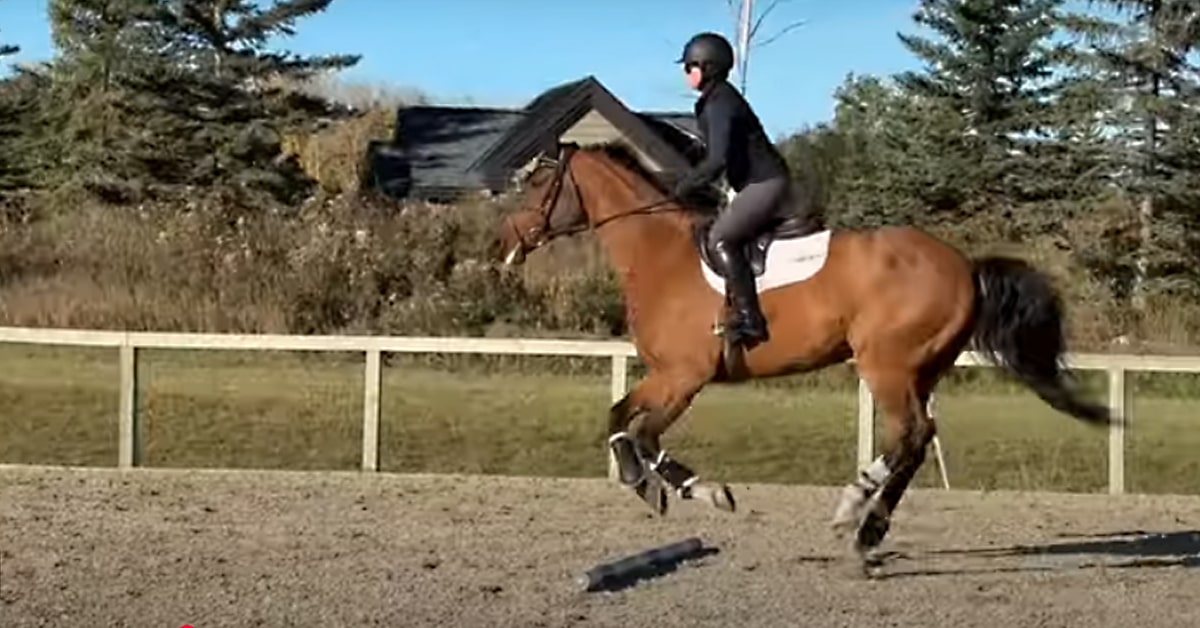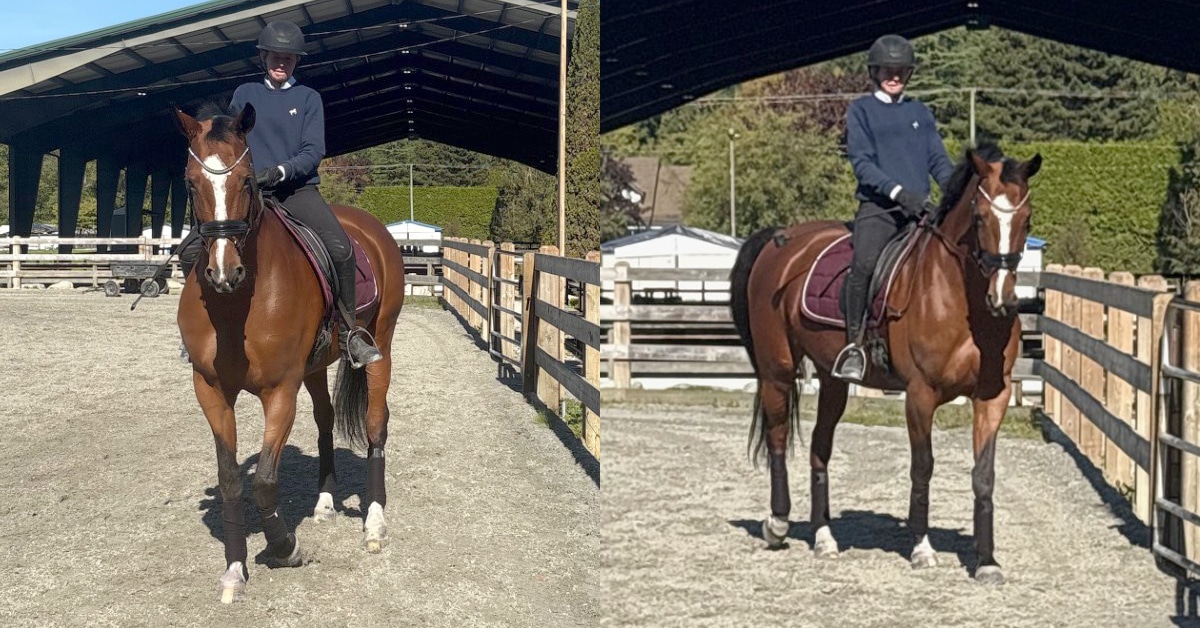In lateral work, we have suppling exercises and collecting exercises. Shoulder-in, travers and renvers are collecting exercises. This includes half-pass (travers on a diagonal line) and pirouettes (turning the shoulders around travers position).
Where leg yield and shoulder-in are similar and follow this simple rule – both move from inside leg to outside rein to travel in a direction away from the bend/flexion – when the horse and rider learn travers/renvers, it is the first time we ask the horse to remain activated from inside leg to outside rein BUT to travel in the SAME direction as the bend. This results in engaging the outside hind leg while the horse has an active inside hind leg, thus encouraging both hind legs to stay under the horse’s body, requiring more collection than shoulder-in.
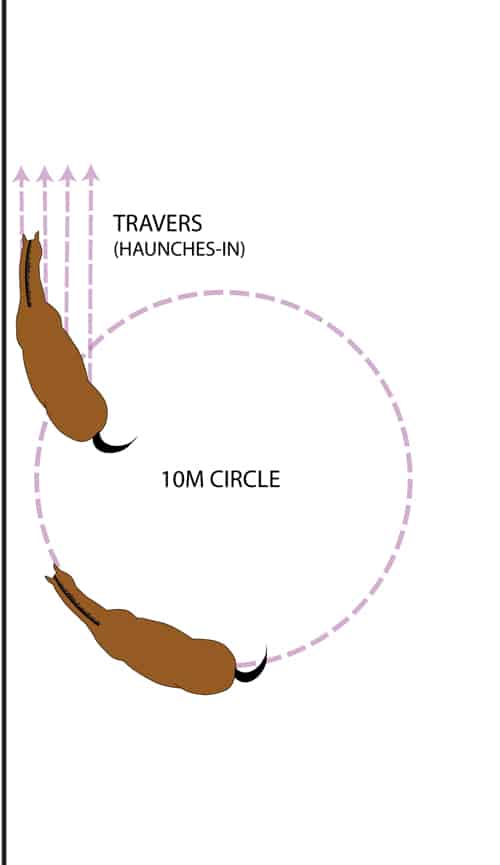
Diagram 1 – Travers off a 10m circle.
Strange but true: travers and renvers are exactly the same thing! They are identical twins. The ONLY difference is where the wall is in relation to you and your horse, and how you got the movement started.
What is travers?
Travers is when the horse’s front legs are on the track with the horse’s hind legs to the inside of the track while the horse is bent in the direction of travel. Travers right – the horse is bent to the right while the horses haunches are to the right. The rider is sitting in the middle or slightly to the right with the left leg behind the girth. The EC rule book defines it as a four-track movement.
What is renvers?
Renvers is exactly the same thing, with the fence/rail on the other side of you. Usually a rider approaches the renvers from shoulder-in.
RIDER POSITION: For any lateral work where the horse’s body is bent, the rider should be sitting to the inside so their inside leg, positioned at the girth, provides a pillar for the horse to bend around. However, if you try too hard to sit to the inside, you will get in the way. It is easier to imagine sitting in the middle and allowing the horse to draw you onto your inside seat bone as they soften their rib cage and offer to bend. You may find this is easier on one side than the other.
Executing Travers
The aids for travers can be a bit of a brain-teaser, as it is a ‘weight’ aid rather than a ‘pushing’ aid. The easiest approach is off a 10m circle (10m because this is the arc for second level shoulder-in and travers). To maintain the bend in the horse’s body, the rider continues to ride inside-leg-to- outside-rein, steps into the inside stirrup/seat bone, and as the horses front legs return to the track at the end of the 10m circle (see diagram #1) the rider half-halts and draws the outside leg back from the thigh (not just from the knee!) to encourage the horse’s outside hind leg to step to the inside BEFORE its hind legs finish the circle.
As the rider half-halts and sits to the inside while drawing the outside leg back, the idea is that the horse follows the rider’s seat and wraps its body around the inside leg. The rider encourages the horse to keep the hind legs on the arc of the circle as the front legs travel on the rail, rather than pushing the hind legs back in again at the end of the circle.

Diagram 2 – Shoulder-in to renvers.
HINT: If you push too hard with your outside leg, then you will push out the bend and end up pulling on the inside rein.
FUN FACT #1: The shoulder-in and travers are the same bend/arc as a 10m circle for second and third level. The shoulder in is the same as the first step of the circle and travers is the same as the last step of the circle.
FUN FACT #2: If you rode in the middle of a big field with no fences, travers right and renvers right would be exactly the same movement. Similarly, if you closed you eyes in the arena, your aids should be exactly the same for travers right and renvers right. The ONLY difference is where the wall is in relation to you.
Executing Renvers
After you are proficient at travers, the next step is learning renvers – another brain puzzle. Renvers is travers with the wall on the other side. The approach to renvers is most commonly from the shoulder-in, which means you have to change the bend, your weight/seat position, and your legs.
The steps for the ‘switch’ from shoulder-in to renvers (see diagram #2):
1. Establish shoulder-in.
2. Straighten the horse’s body and increase the angle from three-track shoulder-in to four-track leg yield as you move both legs to the girth and sit in the middle.
3. Slowly start to flex to the new inside (towards the wall) without allowing the front legs to turn towards the track, with help from your new inside leg, which is at the girth. Your new outside leg (on the inside of the arena) slides back and the new outside rein half-halts once you have the new position.
As a finished product, this will appear to happen fluidly in three to four strides. To start with, it may take 10 metres or more to make your way from shoulder-in to leg yield to renvers. Don’t worry, go slowly and figure out the steps until you can move through the process more quickly.
TIPS
- Make renvers easier by trying it in the walk first before attempting trot.
- Ask for halt when you make the change from shoulder-in to leg yield. Ask for the new flexion within the halt, move your legs, and then walk away. Use the full halt to find where you will be using your half-halt.
- Once you can do it all in walk, trot the shoulder-in, make a transition to walk with the half-halt into the leg yield, and continue renvers in walk. Graduate to trot shoulder-in, walk, switch to renvers, and walk or even trot away. The more control you have over the ‘switch’, the more fluidly you will be able to show it in third level!
The renvers is also a great tool for improving your half-passes, developing the feel for switching the body shape in preparation for half-pass zig-zags, and for activating both hind legs for more collection as you move up the levels.
The Latest
